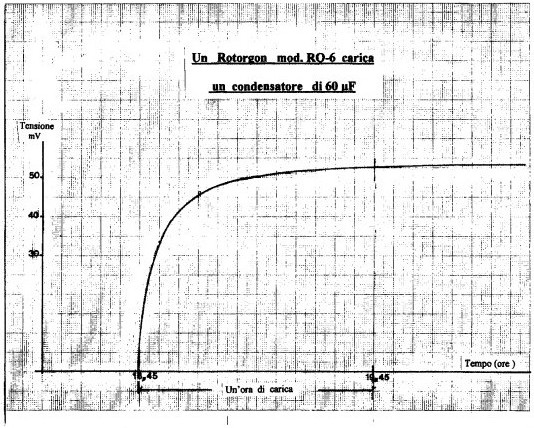Study on the electrical properties
of the Rotorgon
If we connect the device to a condenser we can
see that, after some times, the condenser is charged. The two
walls of the condenser will have to be connected to two metallic plates
fixed to the border of the box, after having interpose, between the
border and plate, an insulating layer (see attached figure). We used
for the purpose two aluminium strips, glued to two rectangular streams
of cardboard (3 cm x 10 cm). These two electrodes are fixed to the
borders by means brass clamps. At the beginning of the test, at 6,45
pm, the 60 mF condenser, was discharged. After 5 minutes, by using a
tester connected in parallel, an increasing reading of 34 mVolt was
found.
We tested on the RO-6 Model (opening angle of the box of 120°),
whose rotor rotated all the time of the test in counterclockwise, with
swinging motion (accelerated and decelerated) and with an average
velocity of 12-14 round per minute. The device was west-oriented.
Test condition. Time: 6,45 pm, internal temperature: 22 °C,
internal relative humidity: 41%, pressure: 766 mmHg.
At 7 pm the tension was 46,5 mVolt, at 7,27 pm it increased to 50,5
mVolt, and at 7,37 pm it was 50,8 mVolt. After 1 hour from the
beginning of the test, namely at 7,45 pm, the reading was 51,5 mVolt.

fig. 5

